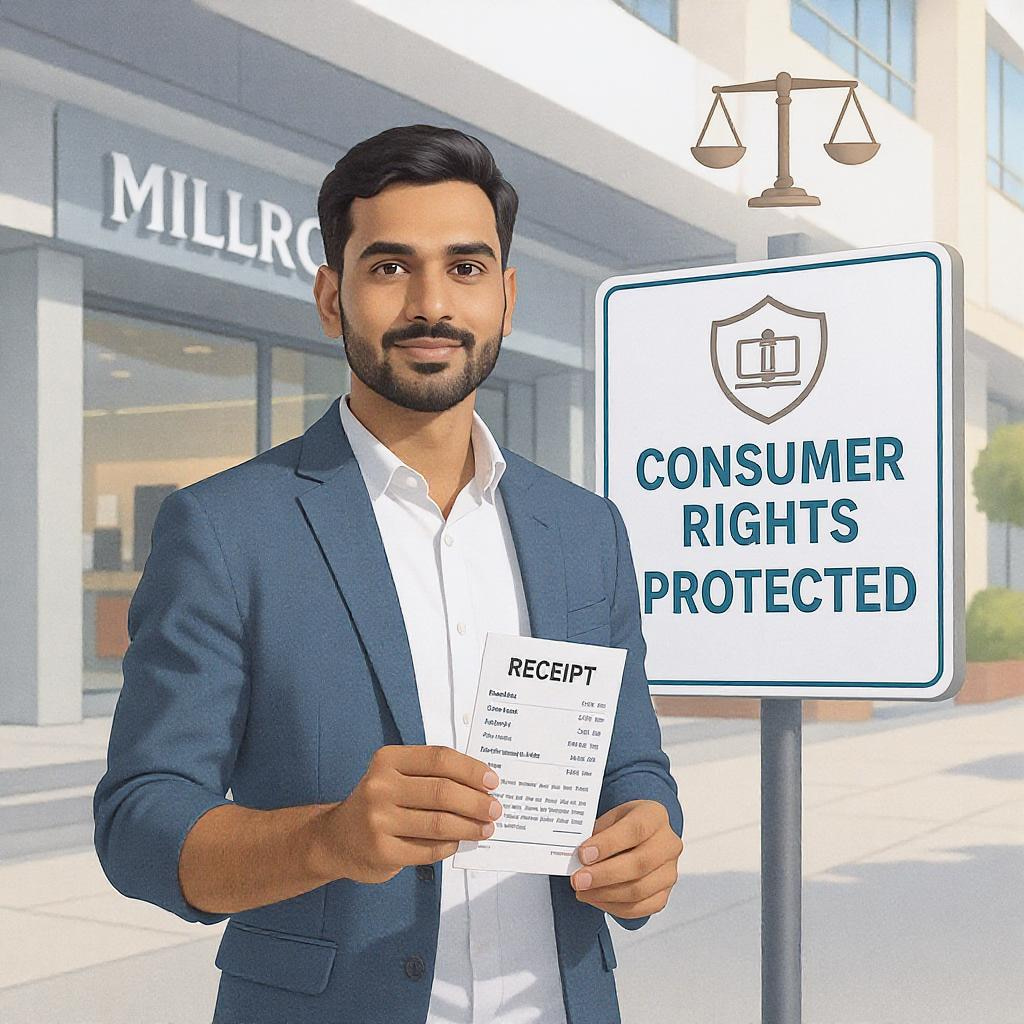This guide breaks down the Consumer Protection Act in simple terms, explaining what rights you have as a consumer, how to file a complaint if scammed, special protections for online shoppers, and recent updates under the 2019 law. By the end, you’ll know exactly how to demand refunds, replacements, or compensation when treated unfairly.

What is Consumer Protection Act
Every day, millions of people purchase goods and services, trusting businesses to deliver quality products. But what happens when you receive a faulty product, experience terrible service, or fall victim to false advertising? The Consumer Protection Act (CPA) exists to protect you from such unfair practices.
The Consumer Protection Act (CPA) was first introduced in 1986 and later updated in 2019 to address modern shopping challenges, including e-commerce fraud, misleading ads, and unfair contracts.
Key Goals of the Law
- The CPA is designed to shield buyers from exploitation by sellers/manufacturers
- Provide a fast, low-cost way to resolve complaints, hold businesses accountable for defective products or poor service, and educate consumers about their legal rights.
6 Key Rights Every Consumer Has
The CPA guarantees you six fundamental rights:
- Protection from Harmful Products – You cannot be sold dangerous or substandard items (e.g., exploding phone batteries, expired medicines).
- Clear Product Information – Sellers must disclose price, quality, expiry date, and usage instructions honestly.
- Freedom to Choose – No business can force you to buy something—you have the right to compare options.
- Right to Complain & Be Heard – Companies must acknowledge and address your complaints.
- Compensation for Faulty Purchases – You can demand refunds, replacements, or money for damages.
- Access to Consumer Education – The government runs awareness programs to help people understand their shopping rights.
Who Qualifies as a Consumer?
You are legally a consumer if you buy goods/services for personal/family use (not for business) or use a product with the buyer’s permission (e.g., a gift).
You are NOT a consumer if you purchase goods to resell (e.g., retailers, wholesalers) or buy items for commercial purposes (e.g., office supplies for a company).
Real-Life Examples of Consumers:
A mother buying baby food for her child.
A patient paying for surgery at a hospital.
A customer ordering groceries from Blinkit or Instamart.
Common Issues Covered Under the Act
You can take legal action if you experience:
- Faulty Products – A new washing machine stops working in a week.
- Bad Service – A delayed flight, wrong medical treatment, or poor repairs.
- Hidden Charges – Extra fees not mentioned at checkout.
- False Advertising – A “100% organic” product that tests fake.
- Scams – Sellers delivering counterfeit or completely different items.
How to File a Complaint (Simple Steps)
The Consumer Protection Act, 2019 provides three levels of consumer courts:
- District Commission: Up to ₹1 crore
- State Commission: ₹1 crore – ₹10 crore
- National Commission: Above ₹10 crore
Step-by-Step Complaint Process:
- Write a Complaint Letter – Include your name, contact details, issue description, and compensation demand.
- Gather Proof – Keep bills, warranty cards, photos, emails, or videos as evidence.
- Submit to the Correct Commission – Based on your claim value.
- Pay a Small Fee – Typically ₹100–500, depending on the state.
- Attend Hearings – No lawyer required—you can represent yourself.
💡 Quick Tip: Call the National Consumer Helpline (NCH – 1915) for free assistance.
Special Rules for Online Shopping
Since e-commerce scams are rising, the 2019 law introduced strict protections:
- Seller Transparency – Websites must display seller name, address, and contact info.
- No Fake Reviews – Platforms like Amazon can’t allow manipulated ratings.
- Easy Refunds – You must be allowed to return defective products without hassle.
- Joint Liability – Both the online platform & seller can be sued for fraud.
How to Complain Against Flipkart/Amazon?
First, contact customer service for a refund/replacement. If ignored, file a complaint at consumerhelpline.gov.in. Escalate to consumer court if unresolved.
What Can You Get If You Win?
If your complaint succeeds, you may receive:
- 💰 Full refund of your payment.
- 🔄 Free repair or replacement of the product.
- ⚖ Compensation for mental distress (sometimes lakhs of rupees).
- 🚨 Punishment for the seller – Heavy fines or even jail in fraud cases.
Real Case Example:
In 2023, a consumer won ₹3.5 lakh from a car company for selling a defective vehicle.
Latest Updates in the 2019 Law
- Strict Product Liability – Companies must pay for harm caused by defects.
- Mediation Option – Resolve disputes without long court battles.
- Punishment for Fake Ads – Celebrities endorsing scams can be fined ₹10 lakh+.
- Group Complaints – Multiple victims can file together (class-action suits).
Final Thoughts: Shop with Confidence
The Consumer Protection Act gives you the power to fight back against scams, defects, and poor service. Always keep bills and warranty cards safe, first contact the seller before going to court, and use mediation for quicker solutions.
Stay informed, know your rights, and never accept unfair treatment!
1. Do I need a lawyer to file a complaint?
No! The system is designed for ordinary people to use easily.
2. How long do I have to complain?
2 years from the date you discovered the issue.
3. What if the company ignores the court order?
Authorities can seize their property or impose heavy fines.
4.Are digital subscriptions (Netflix, Prime) covered?
Yes! Online services fall under the CPA.
